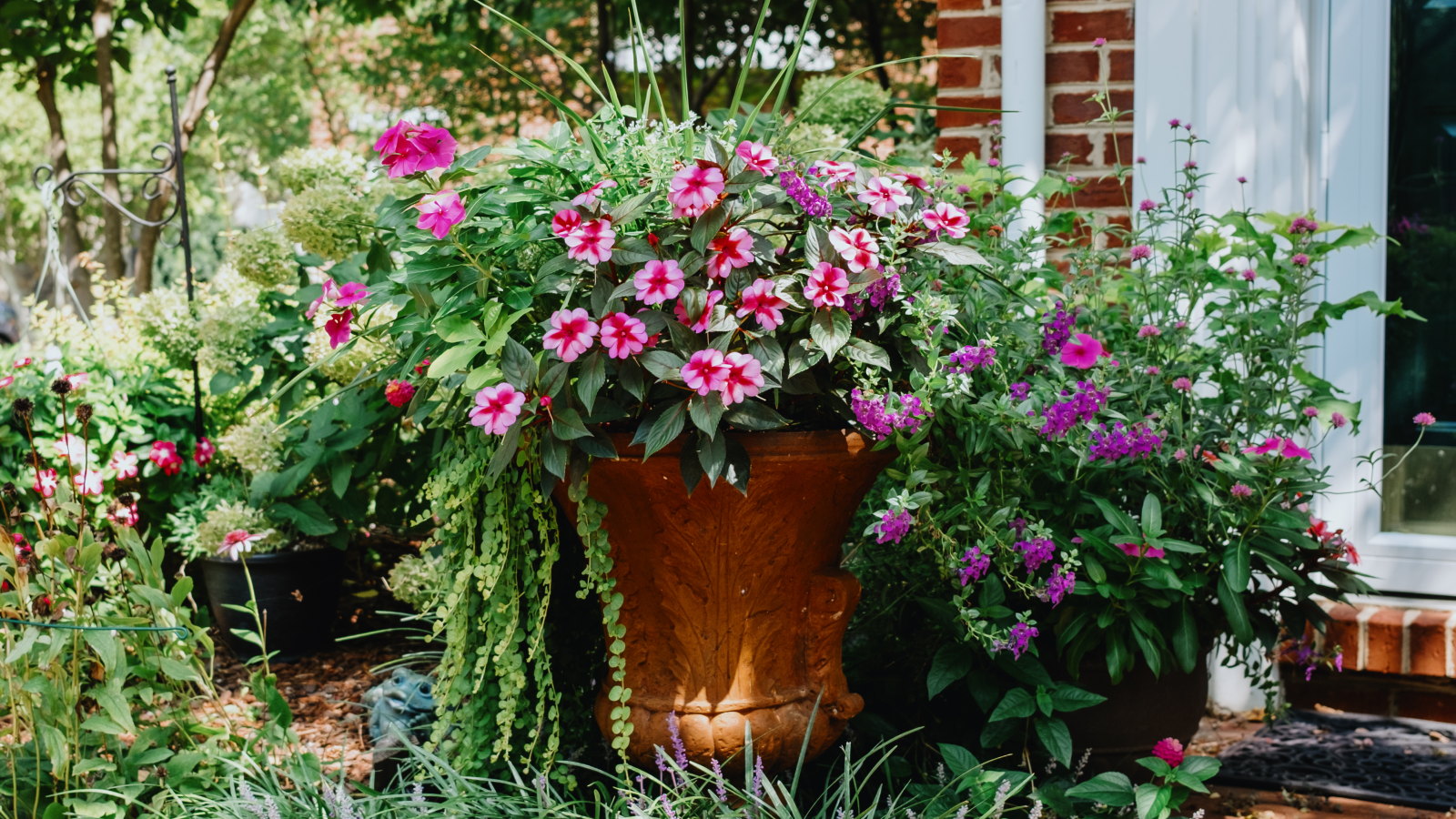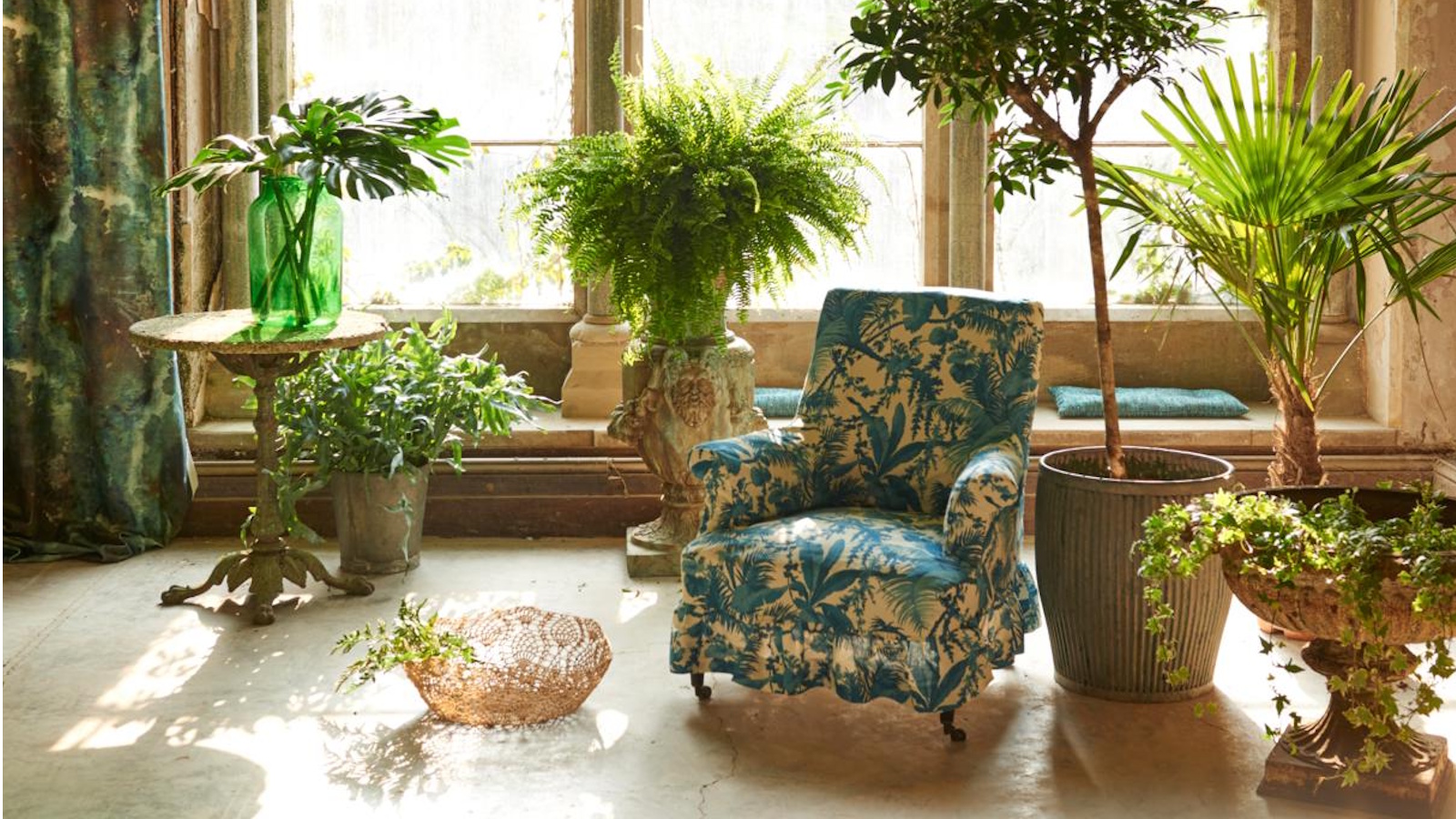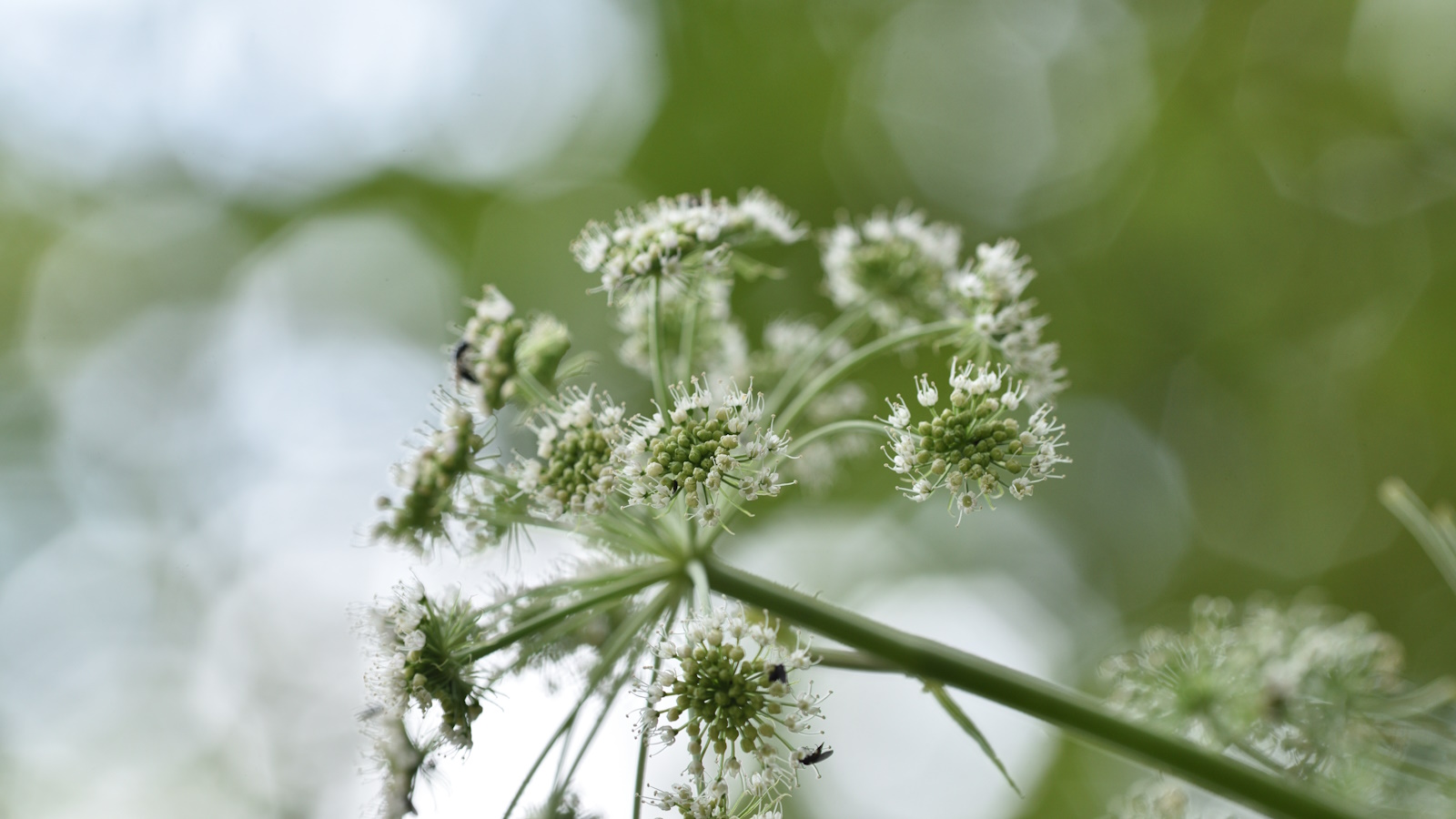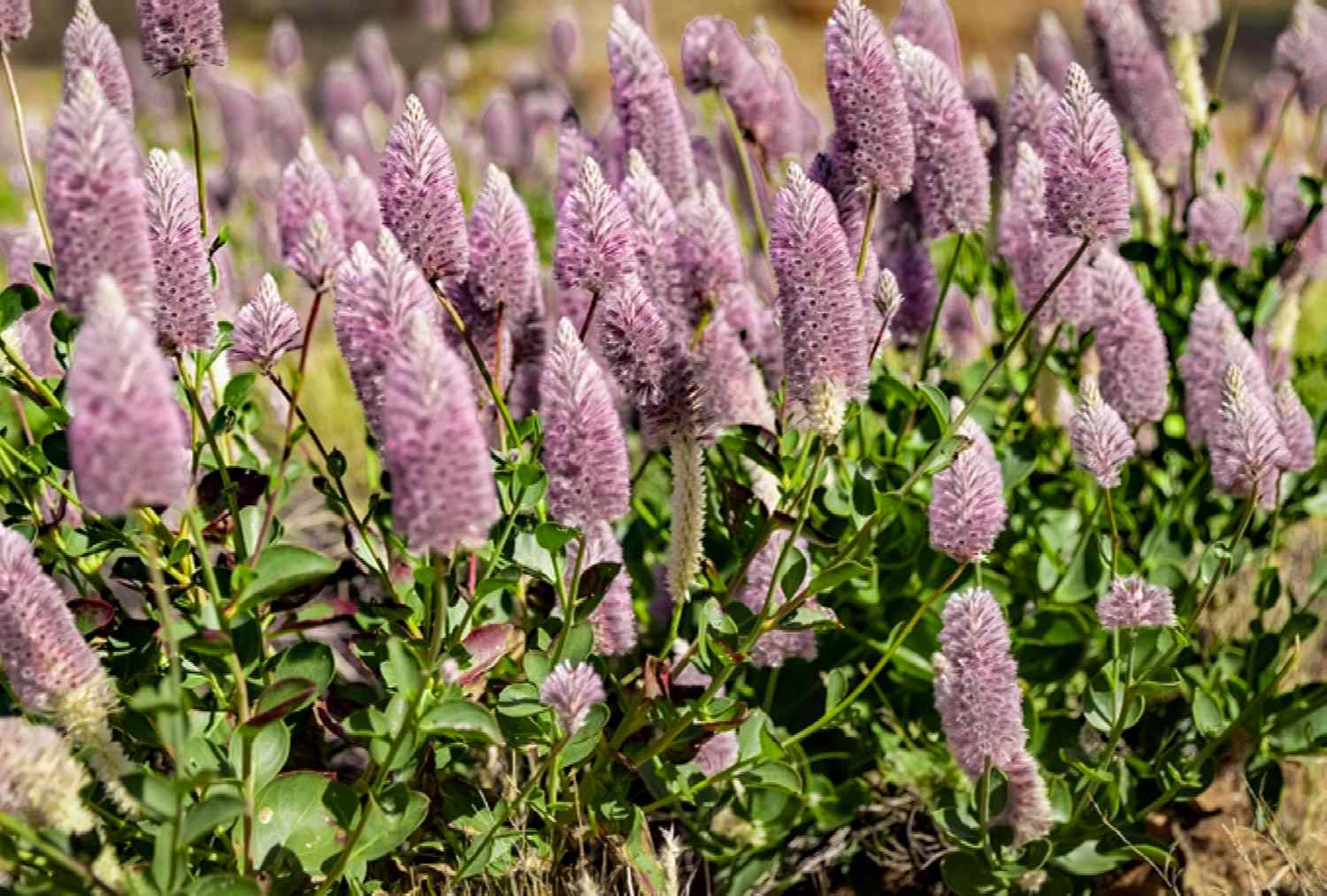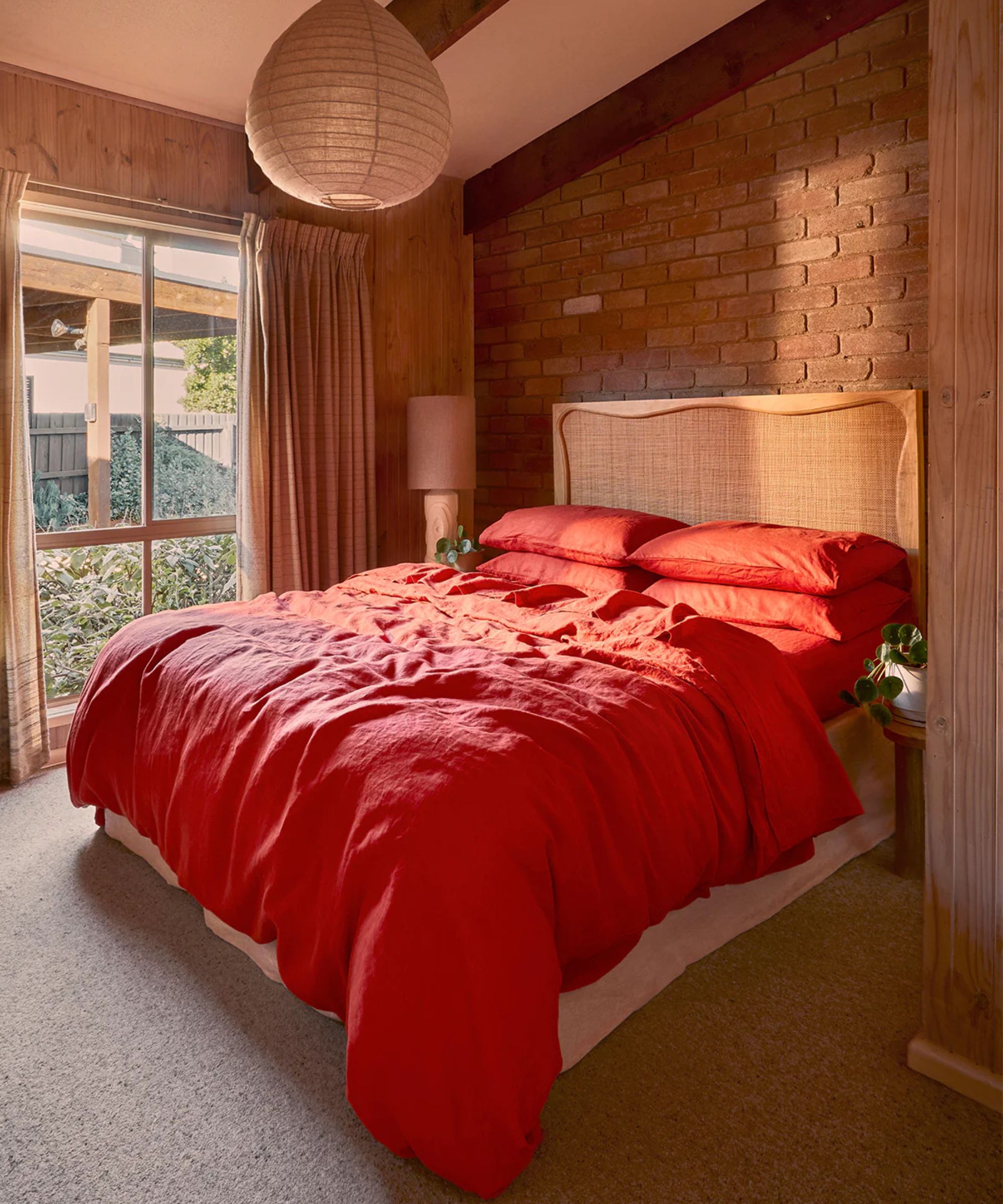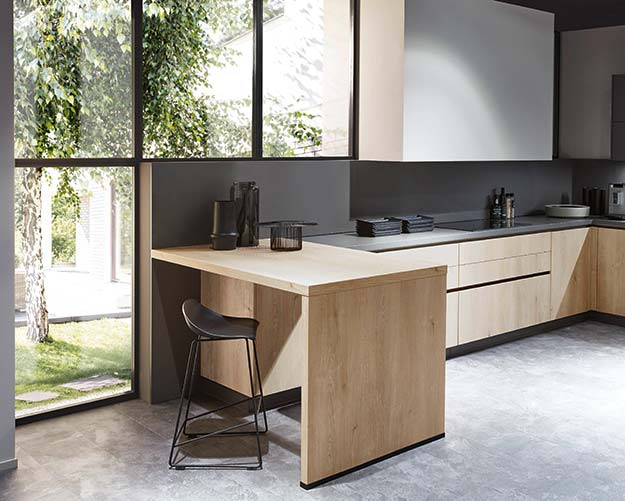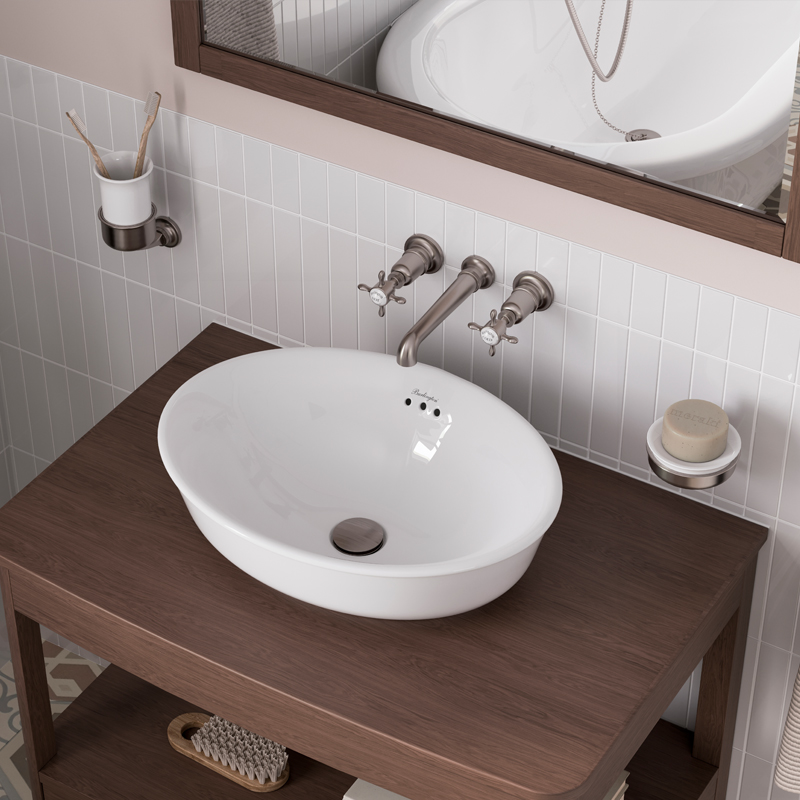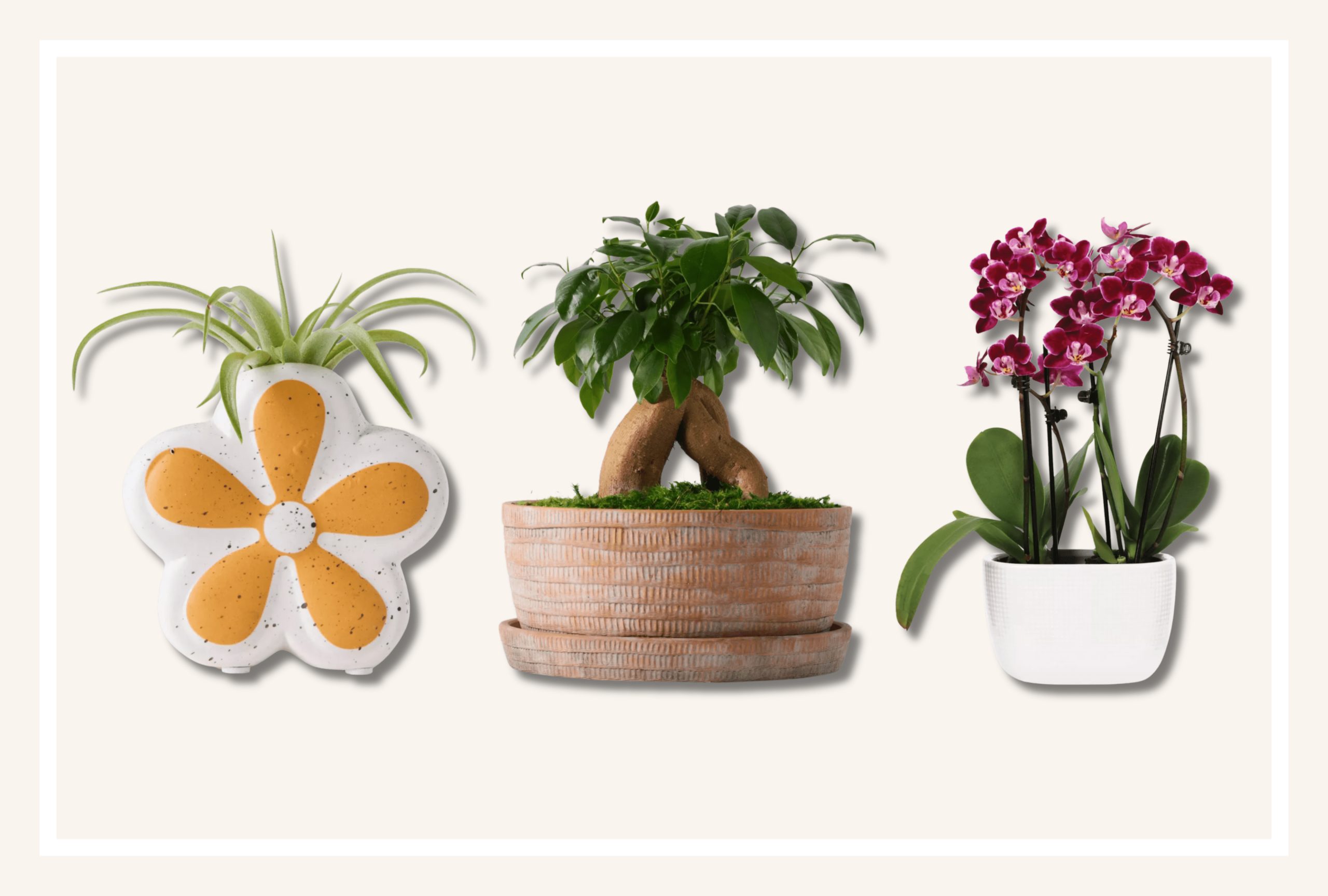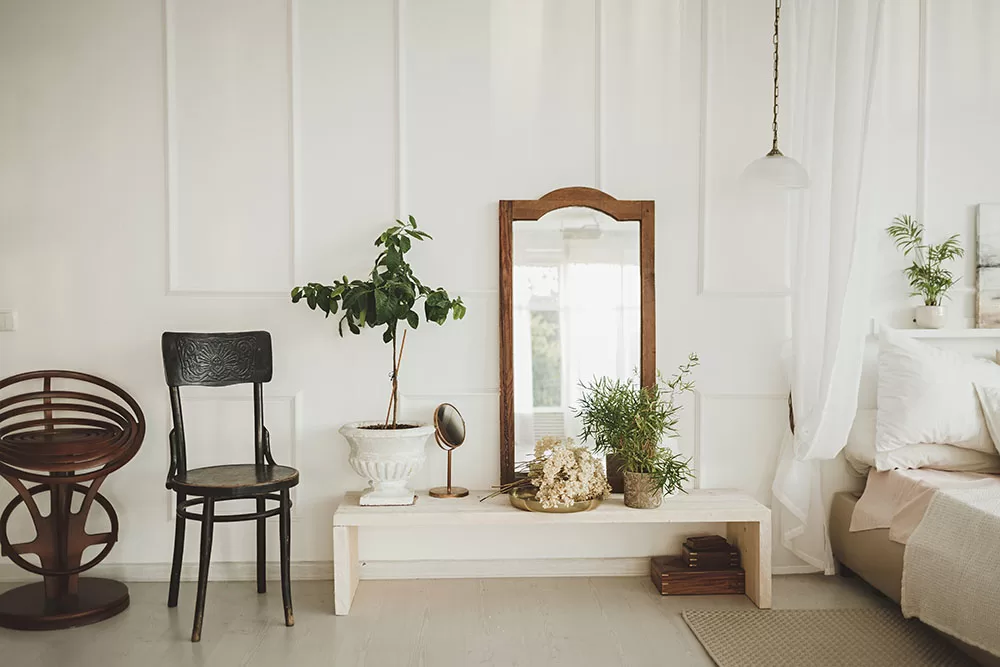Japanese sedge—also called Morrow’s sedge or evergold carex—is a semi-deciduous rhizomatous evergreen native to Central and Southern Japan. It kinds a densely tufted tussock of slender foliage that shimmers within the breeze, with flat, darkish inexperienced leaves which are 12 inches lengthy and 1/4- to 1/2-inch extensive.
Finest planted in spring, the expansion behavior of Japanese sedge is dense, clumping, and mounding. The plant will develop at a average tempo, reaching its mature peak and unfold inside about two years’ time. Inconspicuous brown flowering spikes emerge on the plant in mid to late spring.
The Spruce / Ok. Dave
The Spruce / Ok. Dave
Japanese Sedge Care
Japanese sedge is a really versatile plant—it mingles attractively with flowering bulbs and perennials and is a good way to create texture in your panorama. It may be utilized in backyard beds or as a border plant and is superb for rising round ponds or water gardens on account of its love of moist soil. Along with rising effectively in containers, it additionally seems good in rock and cottage gardens, and it’ll thrive in shadier spots, like beneath timber and shrubs.
Mass plantings of Japanese sedge will entice a slew of pollinators to your yard, together with butterflies and bees. Just like tussock and foothill sedges, Japanese sedge is deer tolerant and low-maintenance, providing year-round curiosity, and might even thrive via the winter so long as it would not get too chilly. Moreover, points with pests or ailments are pretty uncommon.
Mild
Japanese sedge crops are distinctive in that they thrive in shady areas, like underneath a cover of timber or in spots shaded by your own home or different construction. They’ll additionally do effectively with a bit of dappled daylight, although it must be minimal (not more than 4 to 5 hours of partial daylight a day). If uncovered to an excessive amount of solar, the plant’s foliage will bleach and its inexperienced coloration will fade considerably.
Soil
Plant your Japanese sedge in any soil mix that’s reasonably moist, fertile, and well-draining. The plant adapts effectively to a wide range of completely different soil varieties (like chalk, clay, loam, or sand) and pH ranges however just isn’t eager on dry soil.
Water
Japanese sedge crops must be watered persistently, particularly as they’re getting established in your panorama. An excellent rule of thumb is to drench the plant when the highest layer of soil has dried out, and you must by no means let the bottom dry out completely in the event you can assist it. As soon as the plant is established in your panorama, it will likely be reasonably drought-tolerant. When watering Japanese sedge crops, intention your hose or watering can on the base of the plant as a substitute of into the dense foliage—this can assist cut back the chance of fungal ailments.
Temperature and Humidity
Japanese sedge crops are cool-weather lovers and expertise their most important development when temperatures are beneath 75 levels Fahrenheit. That stated, they tolerate a variety of temperatures and don’t have any particular humidity necessities. To guard the plant throughout particularly chilly winters, you may cowl it with a thick layer of natural mulch across the root zone.
Fertilizer
You do not want to fret about fertilizing your Japanese sedge crops—they set up themselves fairly simply and can develop simply superb with out the assistance of further vitamins.
Kinds of Japanese Sedge
Greater than 1500 species of Carex develop in moist-to-wet areas world wide, making it difficult to establish particular person species. There are a number of widespread grass varieties within the Carex genus which are generally confused with Japanese sedge, together with foothill sedge and tussock sedge. Nonetheless, there are a selection of well-known varietals of Japanese sedge as effectively, lots of which differ solely barely in coloration or look however not care. They embrace:
- Carex morrowii ‘Variegata’: This varietal seems largely the identical as Japanese sedge, however boasts leaves which have vivid white margins on both aspect.
- Carex oshimensis ‘Evergold’: This varietal is characterised by creamy yellow leaves which have vivid inexperienced margins. It grows in a low, grass-like mounded clump much like Japanese sedge.
- Carex morrowii ‘Silk Tassel’: Maybe probably the most distinctive of the bunch, this varietal has leaves which are skinny, whispy, and green-silver in coloration. The superb texture of the leaves lends the plant a fountain or mop-like impact.
Pruning Japanese Sedge
It is not essential to prune your Japanese sedge all through its rising season. Shaping the plant can also be pointless, so long as you want its free type and it is not infringing on any close by crops. Nonetheless, if you don’t stay in an space that promotes its well being all yr lengthy, Japanese sedge can (and will) be lower down earlier than winter so it is able to welcome recent foliage the next spring.
To organize it correctly, trim again the leaves to floor stage, being cautious to not prune too aggressively and rip out the plant’s roots. Take away any particles from the world across the plant and mulch over the trimmed foliage if desired.
Propagating Japanese Sedge
Division is the advisable technique of propagation for Japanese sedge. Plan to divide your plant each three to 4 years, which is across the time that the middle of your mature crops will see a discount within the variety of new leaves they produce.
- Within the spring, when the brand new development begins, elevate your complete plant out of the bottom with a shovel. Whether it is too huge transfer it in a single piece, do it in sections.
- Gently break the clump into sections. Shaking off any extra soil helps to separate the clump into smaller sections.
- Plant the sections in new places on the similar depth as the unique plant. Water effectively and maintain the soil evenly moist till you see new development.
How one can Develop Japanese Sedge From Seed
Japanese sedge could be erratic to germinate and seeds will not be extensively accessible, as it’s principally bought as a plant. In case you are planning to gather seeds from your individual plant, it is perhaps a cultivar, which signifies that seeds from that plant will not produce a brand new plant that’s true to the father or mother. If you happen to nonetheless need to give it a attempt, this is find out how to develop Japanese sedge from seed:
- Sow seeds in seed flats full of seed starter combine or gentle potting combine and canopy them solely with a dusting of soil.
- Japanese sedge prefers cooler temperatures to germinate. Maintain the seed flats at a temperature round 60 levels Fahrenheit, in a location with dappled gentle. Water often to maintain the soil evenly moist.
- After the seedlings have developed a root system that fills the cell, it’s secure to plant them outdoor, which is finest completed within the spring or fall.
Potting and Repotting
Due to its low peak, Japanese sedge is a perfect container plant. You’ll be able to plant it in a pot by itself or mix it with different crops which have comparable watering and solar wants.
The container must be no less than 6 inches or extra bigger than the foundation ball of your plant so there’s enough room for it to develop for 2 to 3 years with no need any repotting. Good drainage holes are important. Fill the container with a good-quality potting combine. For a sedge in a planter combo, additionally take its future development into consideration so that you don’t overcrowd the container.
As soon as the foundation system has crammed the container, repot it in a container one dimension up in recent potting combine.
Overwintering
If you happen to stay in an space that experiences gentle winters, there is no such thing as a have to take particular precautions together with your sedges when the seasons change. You could need to put a thick layer of natural mulch across the base of the crops earlier than the temperatures drop and droop your watering schedule within the late fall and thru the winter.
Nonetheless, in case your winters ship chilly temperatures and freezes are a standard prevalence, then it’s most likely finest to chop your sedges to the bottom, mulch across the base of the crops, and watch for them to develop once more within the spring.
Sedge in containers must be protected in areas with prolonged freezing temperatures, as this will injury the roots. Defend the container with a burlap and bubble wrap, or place the container inside an insulation silo.
Frequent Pests and Plant Illnesses
Japanese sedge is proof against severe pests and ailments and never palatable for deer and different herbivores.

